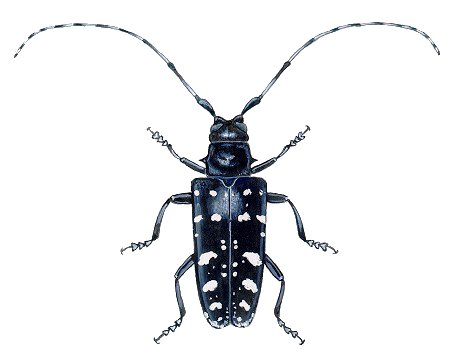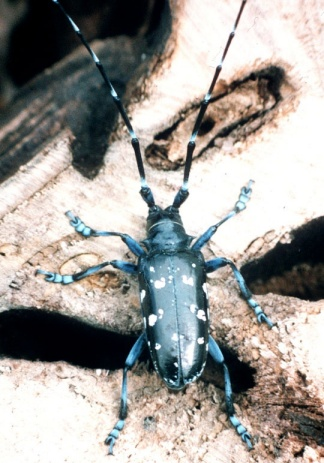Asian Longhorned Beetle
 Causal Agent
Causal Agent
Anoplophora glabripennis
Habitat
This beetle is native to China, Japan, Korea, and the Isle of Hainan and an accidental immigrant in North America. Adults are drawn to recently felled, stressed, or apparently healthy hardwood trees. Hosts include healthy maple, horse chestnut, birch, Rose of Sharon, poplar, willow, elm, locust, mulberry, chinaberry, apple, cherry, pear, and citrus trees. It may also attack other species of hardwood trees. In addition, nursery stock, logs, green lumber, firewood, stumps, roots, branches, and debris of a half an inch or more in diameter are subject to infestation. This beetle is only established in areas surrounding New York City and Chicago but has been intercepted in wooden crates and packing material originating from China at numerous sites around the country.
Appearance
Adults are glossy black, 20-35 mm long. Both sexes have up to 20 irregularly distinct white spots on the otherwise black elytra. Antennal segments 3-11 distinctly banded white and black in both sexes. Legs bluish-white on dorsal surfaces. In Oklahoma, this beetle is most often confused with cottonwood borer.
Life Cycle

Control
Contact OSU Entomology and Plant Pathology at (405) 744-5527 immediately if you suspect you have an infestation. Infested trees should be removed and destroyed by chipping or burning. Please contact your local county extension office for current information. Additional information may be found on the USDA ALB website.

